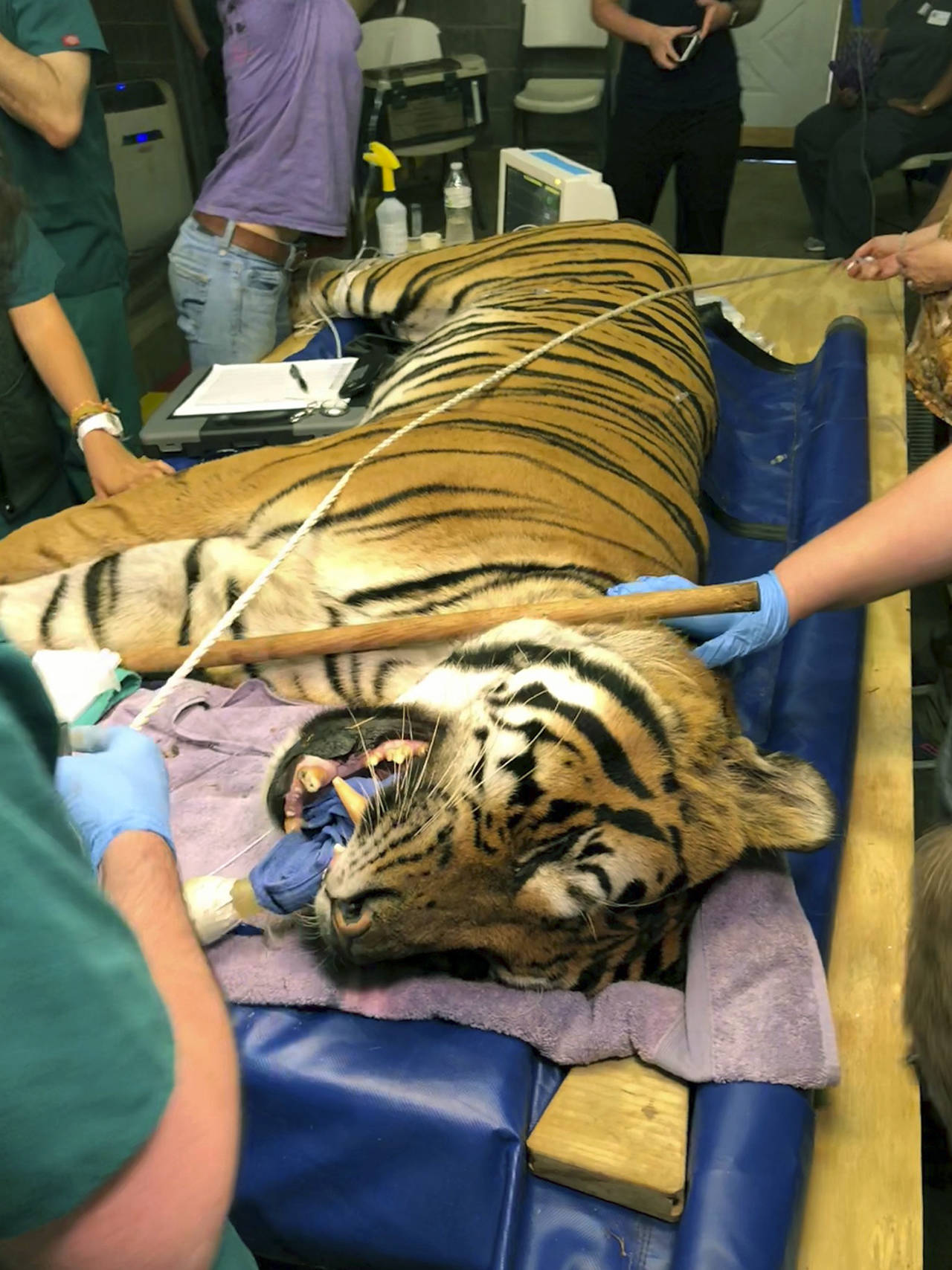PITTSBORO, N.C. — Even for some humans, the ideal root canal scenario might involve being unexpectedly darted with a tranquilizer, anesthetized and then released back into the world after it’s all over, oblivious to everything that just happened.
That’s definitely the way to go when dealing with 400-pound cats.
Three tigers and a lion at the Carolina Tiger Rescue in Pittsboro got much-needed dental work recently courtesy of the Peter Emily International Veterinary Dental Foundation in Colorado. The group of volunteers worked a recent weekend to give the four cats — all rescue animals from exploitative or abusive backgrounds — pain-free mouths.
Jessika Morgan, communications coordinator for Carolina Tiger Rescue, said they started with the biggest cats first. That meant Sebastian, a 475-pound lion, was the first to meet the dentist on Saturday.
Sebastian, who lived chained up as a prop in a haunted house in Texas before being rescued, had three fractured canines. He was darted and then carried to the quarantine center — it took eight people to move him — where he was anesthetized and given Propofol in an IV. After a root canal and one tooth extraction, Sebastian rested in his wildlife enclosure, slightly dazed.
Each procedure lasted about three hours, and it took the cats about 30 minutes to wake up after the sedation. A keeper stayed with them to make sure they were OK. The only time any of the cats at CTR can be touched is when they are under sedation.
Tio, a 16-year-old tiger rescued earlier this year, got three root canals on Saturday because of broken and worn-down teeth.
Morgan described Tio as being very social and a tour favorite at the Pittsboro sanctuary, which now has 49 rescue animals.
“Everyone loves him,” said Morgan. “He comes up and says his ‘hello’ chuffle, and he has a great coat color and he’s kind of chill. He has a big personality, and he’s willing to show his face.”
Morgan said the details about Tio’s living conditions prior to being rescued are unclear, but they learned during his intake physical that he had very bad teeth. “We don’t know what he had been chewing,” Morgan said. Tio had also been declawed, which has caused arthritis.
“When he was rescued and got to his enclosure, he came bounding out like a puppy,” Morgan said. “Maybe he never felt grass before, or maybe he never had a den box to sleep in.”
Saber, 7, and Shenandoah, 16, had Sunday appointments. Both cats had been exploited in a zoo situation and as cubs had their teeth filed down so far that the pulp was exposed — a very painful situation. They both got root canals. The three tigers weighed in at around 325 to 335 pounds each.
The dental work for Tio, Saber, Shenandoah and Sebastian cost Carolina Tiger Rescue nothing.
The mission of the Emily Foundation, started in 2005 and made a public nonprofit in 2009, is to provide free advanced dental care to exotic animals in underfunded and understaffed sanctuaries. The group so far has visited 22 different sanctuaries on 81 separate missions, treating 432 patients.
Emily Foundation media coordinator Michelle Hall said the group, made up entirely of volunteers, does six to eight dental missions a year. This weekend, they brought three board-certified veterinary dentists, including Dr. Barron Hall, dentist at the National Zoo in Washington, D.C.
Veterinary dentist Dr. Brian Hewitt of Las Vegas took the lead on Tio’s dental work.
“We treat all kinds of animals,” Hall said. “Anything with teeth.”



